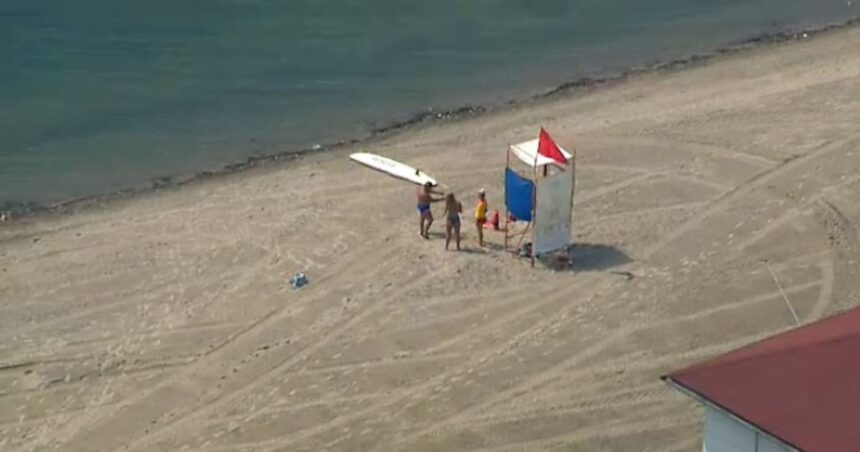The shimmering blue waters of two popular Toronto beaches have become a health concern this week as city officials issue swimming advisories due to dangerously high E.coli levels. Water samples collected during routine testing revealed bacterial counts well above safety thresholds at both Sunnyside and Marie Curtis beaches, casting a shadow over recreational plans for many Toronto residents seeking relief from summer heat.
“We’re seeing E.coli counts that exceed our safety parameters by a significant margin,” said Dr. Helena Moreau, Toronto Public Health’s water quality supervisor. “These levels represent a genuine health risk, particularly for children, elderly individuals, and those with compromised immune systems.”
The elevated bacterial counts come following heavy rainfall earlier this week, which typically washes contaminants from urban areas directly into Lake Ontario. Toronto’s aging combined sewer system, which handles both stormwater and sewage, can become overwhelmed during intense precipitation events, resulting in untreated or partially treated wastewater entering the lake.
Swimming in contaminated water presents various health risks, including gastrointestinal illness, skin rashes, eye infections, and ear infections. Symptoms of E.coli exposure may include stomach cramps, diarrhea, vomiting, and fever, with vulnerable populations at heightened risk for more severe complications.
While swimming advisories have been posted at the affected beaches, they remain open to the public for other recreational activities. Large warning signs have been installed, and lifeguards are actively informing visitors about the potential hazards of entering the water.
City Councillor James Ramsay, whose ward includes Sunnyside Beach, expressed frustration over the recurring issue. “We’ve been pushing for infrastructure improvements to prevent these contamination events for years. Climate change is bringing more intense storms, and our system simply isn’t keeping pace with these new realities.”
Toronto’s Parks and Recreation Department has implemented an aggressive water testing schedule, with samples now being collected daily rather than the standard bi-weekly protocol. Officials expect bacterial levels to naturally decrease in the coming days, assuming no additional rainfall occurs.
Environmental advocacy groups have seized upon this latest advisory to highlight broader concerns about water quality management across the Great Lakes region. “This isn’t just a Toronto problem—it’s a wake-up call for all lakefront communities,” said Amara Singh, director of Lake Ontario Waterkeeper. “We need comprehensive solutions that address stormwater management, sewage treatment capacity, and climate resilience.”
The city recommends that residents seeking water recreation consider visiting Toronto’s other public beaches, including Woodbine, Cherry, and Centre Island, all of which currently show E.coli levels well within safety parameters. Toronto maintains an up-to-date beach water quality dashboard on its official website, allowing residents to check conditions before heading out.
As climate scientists predict increasingly volatile weather patterns for the Great Lakes region, how will Toronto and other waterfront cities adapt their aging infrastructure to protect public health and preserve recreational access to our precious waterways?










